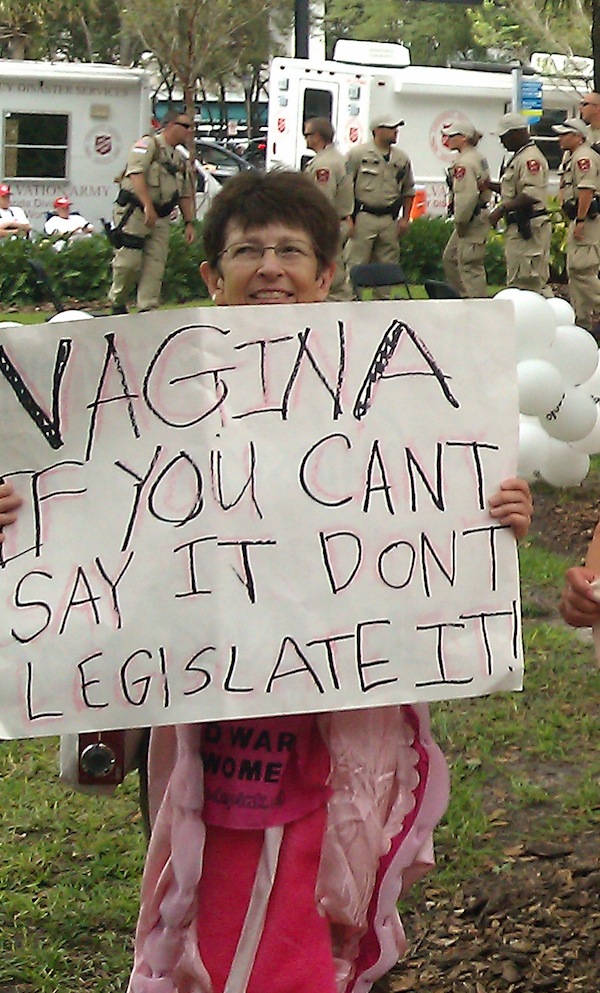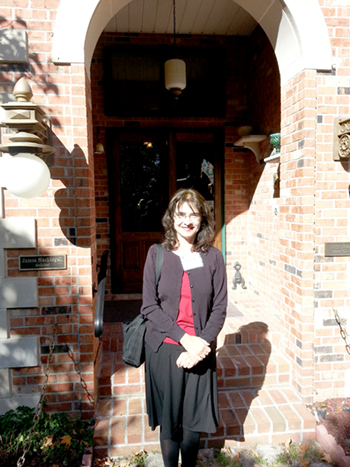![By Ted Eytan from Washington, DC, USA (2017.01.21 Women's March Washington, DC USA 00095) [CC BY-SA 2.0 (http://creativecommons.org/licenses/by-sa/2.0)], via Wikimedia Commons](/images/Womens_March_Washington_DC_USA_33.jpg) Posted on January 23, 2017, by Mary Grabar: As sure as the sun rises, leftists will march when a Republican takes office or runs for office. Since the 1960s this seems to have become their preferred way of communicating.
Posted on January 23, 2017, by Mary Grabar: As sure as the sun rises, leftists will march when a Republican takes office or runs for office. Since the 1960s this seems to have become their preferred way of communicating.
Witness, the Women's March on Washington the day after Donald Trump's inauguration. With the ostensible claim that they were marching against his sexist crudities from an old tape, they emerged with crudities, including pictures and costumes, that might have made the guys in the locker room blush. A good photo montage capturing the profanity-filled signs is over at the Washington Examiner. Protest is now also the favored "discourse" on campuses. Without apology or shame, professors on campuses recruited students to travel to Washington, D.C., to march. It is interesting to note that both newsletters about higher education presented such activities as legitimate educational activities.
National Coordinator for College Engagement: Apparently, the march had a "national coordinator for college engagement." She was quoted by Inside Higher Ed as giving an estimate of 50,000 students participating in the march (that would be about ten percent of total marchers!).
With the title "Beginning of Movement," Inside Higher Ed shows approval--also evident by the rhapsodic descriptions of the march:
Hundreds of thousands of people converged on the nation’s capital Saturday to show solidarity and support for those who feel their rights may be threatened by the new administration, which began just the day before when Donald Trump was inaugurated as the 45th president of the United States.
A Preemptive March: In other words, unlike marching for something like voting rights that are being denied, this was a preemptive march. Rights "may be threatened."
And then approvingly:
Among the sea of pink knit hats and colorful signs were tens of thousands of college students, faculty and administrators who feel that their rights, too, are under attack.
What specific "rights" are not named. Perhaps it is the right to shut down speakers with whom one does not agree, as is common practice on campuses?
 Pink was the color, as it was in 2012 during the Republican Convention when women were fearing what Mitt Romney might do to their rights, perhaps to wear stupid pink costumes in the form of genitalia. We wonder if these women keep such outfits in their closets? Keep those outfits for 2020, ladies!
Pink was the color, as it was in 2012 during the Republican Convention when women were fearing what Mitt Romney might do to their rights, perhaps to wear stupid pink costumes in the form of genitalia. We wonder if these women keep such outfits in their closets? Keep those outfits for 2020, ladies!
A Poetic Feeling: Reporter Emily Tate does not ask for specific facts. Rather, she continues on lyrically:
Some marched for themselves. Some marched for friends and family members. Some marched with contingents that traveled long hours on buses from campuses far from here. College women marched for reproductive rights and stronger legislation against sexual assault and sexual harassment. Some students said they were marching for the rights of undocumented immigrants, Muslims, members of the LGBT community, people of color and people with disabilities. And university professors marched for freedom of speech, freedom of expression, freedom of inquiry and campus diversity.
Yes, some of you may recall the images of the American flag being placed on marchers (including men) as a hijab. Perhaps this has something to do with Muslim rights?
The nonprofit professional association, the American Association of University Professors, was very much involved in what appears to have been a purely anti-Trump march:
The AAUP partnered with the Women’s March to take a stand against some of the recent attacks against college students and professors, Schmid said. The response was overwhelming. They had members participating in over 600 sister marches across the country. Over 350 people came to Washington from the AAUP’s chapter at Rutgers University alone.
The "recent attacks"? Which ones? And how does the march fit into the mission of the AAUP described on their web page as
Since our foundation in 1915, the AAUP has helped to shape American higher education by developing the standards and procedures that maintain quality in education and academic freedom in this country's colleges and universities. We define fundamental professional values and standards for higher education, advance the rights of academics, particularly as those rights pertain to academic freedom and shared governance, and promote the interests of higher education teaching and research.
Dissident Prof's Treatment by the IRS: As described previously, Dissident Prof was subjected to persecution by the Obama IRS. One of the multiple questions in the interrogation was about the opposition to Common Core, an educational issue, and one that the Dissident Prof herself with 20 years of teaching college English, humbly believes she is qualified to weigh in on. This was a purely political activity coordinated with the help of a 501(c)(3) organization. Mr. Trump are you reading?
At the Chronicle of Higher Education, reporter-on-ground Goldie Blumenstyk highlighted Denison University women's studies professor Gill Wright Miller who on the momentous day wore many metaphorical hats. But the one on her head was a pink "pussy cat hat" that women wore to protest "the coarse words that President Trump has used when describing women."
Perhaps part of the effort was to show up the President's choice of words years ago by the signs that included anatomically correct costumes and profanity emblazoned placards, as the accompanying photo montage showed. Two Georgia State University students were shown, wearing banners, suffragette style, though with words for the times: "F*!k Off." Georgia taxpayers, 30 students from that university attended.
"A Way of Learning"? Back to Ms. Blumenstyk's feature article, "Taking It to the Streets at the Women's March as 'a Way of Learning'": Professor Miller, who used $40,000 from "an endowment" to pay for the students in the group of 323 faculty, students, administrators, and alumni from Denison University, wanted her students to have the same kind of "adult formative" experience she had had in protesting the Vietnam War. Miller's involvement was presented as a noble effort:
Ms. Miller said she was thinking especially of the 13 women and two men who had taken her ;Feminist Theory' class in the fall, when so much of the class had focused on the significance of a woman running for president as a major-party candidate for the first time and then losing to Mr. Trump, whom they considered far less qualified. She hoped they were getting the chance to chat with fellow protesters, just as she was doing. 'Those 15 students,' she said, 'have now been able to exponentially expand those conversations we had in class' about the election.
As Matthew Vadum reports, George Soros has funded at least 56 of the partner organizations of the march.
Clearly, though, there is nothing "educational" about going to such a march, nor even in taking Professor Miller's "Feminist Theory" class, conducted we might add in a classroom on a campus that is exempt from paying taxes as a 501(c)(3). Miller's purpose is political advocacy, and of the kind that goes beyond even that of a 501(c)(4).
Sadly, her behavior is nothing out of the ordinary. She, her administrators, the education reporter, the AAUP, see nothing wrong with recruiting students to a political rally.
The New Civics: In fact, this kind of political organizing under the auspices of "civic engagement," "experiential learning," and "service-learning," is now a requirement at most colleges. It is something that the National Association of Scholars calls the "New Civics": progressive activism as civics education. The report, "Making Citizens: How American Universities Teach Civics," in over 500 pages outlines the intricate and extensive patterns of support. The national findings, listed in the Executive Summary, include the fact that this is a national movement, extending far beyond universities:
Each individual college and university now slots its 'civics' efforts into a framework that includes federal and state bureaucracies, nonprofit organizations, and professional organizations.
While no one would deny any groups the right to march peacefully, the recruitment of students to such political events needs to end. So does the use of tax dollars to support it.





